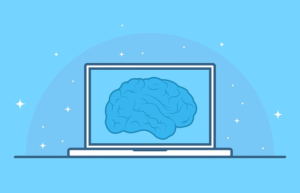
Today we have prepared an interesting comparison: neural network vs machine learning. Because comparing these two concepts is like comparing mozzarella and pizza. Have you ever eaten a pizza without mozzarella? Surely not. The concepts of neural networks and machine learning cannot be thought of separately, despite the fact that some technical jargon makes the process challenging for us to comprehend. Let’s take a look at these two essential ideas for data analytics today, first briefly and then more thoroughly.
The capacity of conventional statistical models to predict optimal knowledge has been improved by the widespread use of big data, processing power, and design. Enterprises utilize big data innovations and complex technologies like AI, machine learning, IoT, etc. to stay competitive in their respective industries. When comparing neural network vs machine learning because it’s really key to understand what businesses’ needs are.
A helping hand: Enterprise SEO tools are crucial for data analytics
It can be difficult sometimes to tell ML and neural networks apart because they have many similarities. On the one hand, it relies on neurons to carry out its operations and is built on the idea of looking at a body of data and drawing conclusions from it. Now let’s start our neural network vs machine learning comparison.
Neural network vs machine learning: Enterprises utilize big data innovations and complex technologies like AI, machine learning, IoT
Neural network vs machine learning: Understanding the main concept
We will start our neural network vs machine learning comparison by explaining the basics. A branch or application of artificial intelligence is called machine learning (AI). A system can automatically learn from experience and advance without being explicitly designed, thanks to machine learning. The field of machine learning is constantly evolving. Understanding data structure and fitting it into models that people can use and comprehend is the aim of machine learning.
Tasks in machine learning are typically divided into broad groups. These categories describe how learning occurs; supervised learning and unsupervised learning are two of the most popular machine learning techniques. If you are eager to learn more details about these techniques, we recommend you to read our article called “Active learning overcomes the ML training challenges.”
Neural network vs machine learning: The design of the brain served as an inspiration for the neural network
The design of the brain served as an inspiration for the neural network. Units or nodes, which are densely interconnected entities, make up the neural network. Technologies for deep learning include neural networks. It typically focuses on finding solutions to complicated procedures. A typical neural network is made up of several algorithms that use neurons to model data for machine learning.
What is a neural network?
A neural network is inspired by the human brain’s structural design. Unsupervised learning fundamentally uses a machine learning model (more specifically, deep learning). A neural network is made up of a web of nodes, or connected objects, each of which performs a straightforward calculation. A neural network acts similarly to human brain neurons in this manner.
Neural networks can assist computers in decision-making while requiring little human intervention. This is why they can learn and model complex, nonlinear relationships between input and output data. They can perform the following duties, for example.
What is machine learning?
When comparing neural network vs machine learning, it’s crucial to understand what machine learning really is. Artificial intelligence is the umbrella term for machine learning. Machine learning aims to create intelligent devices or systems that can automatically pick up knowledge from experience without explicit programming or outside help.
Neural network vs machine learning: Artificial intelligence is the umbrella term for machine learning
In this way, machine learning is a process that is constantly changing. Machine learning tries to comprehend the dataset’s data structure and incorporate the data into ML models that businesses and organizations may utilize.
How are neural networks used in machine learning?
It’s almost impossible to think of neural networks apart from machine learning. Neural networks are important components of the field of machine learning.
Neural network in machine learning
Due to the current data landscape, neural networks represent a major game changer in modern AI and ML:
- The quantity of data required to train sophisticated neural networks is provided via big data platforms, which include big data analytics and hybrid, high-performance cloud environments. Securing the proper kinds and amounts of data was challenging before the development of these technologies. These difficulties opened up the realm of AI’s potential. Modern data platforms, on the other hand, offered a setting in which neural networks could work on enormous data sets and perform intricate tasks.
- High-performance cloud computing is now a possibility thanks to hardware acceleration provided by innovations like dedicated GPUs and high-performance Non-Volatile Memory Express. Following this, committed organizations and researchers are in a good position to develop distributed and scalable machine learning systems.
Deep learning and neural networks now have a real opportunity as a result of these two realities. The prohibitive expenses for storage and computing power were some of the most famous criticisms of deep learning. High-performance computing cloud platforms reduce these costs.
Neural networks do better as they get bigger
Deep learning and neural networks still face some detractors, though. These include the likelihood that neural networks merely make cosmetic improvements to complicated systems, which nevertheless appear complex to human perceptions with their limitations. Another argument claims that neural networks can learn intricate relationships between inputs and outputs without truly understanding causation.
Neural network vs machine learning: Neural network machine learning systems have achieved significant progress in many fields, such as statistical modeling, financial and insurance modeling, etc.
These concerns don’t represent an outright rejection of the technology, but they frame its possibilities, especially in light of more general discussions about how ML systems approach intelligence.
However, neural network machine learning systems have achieved significant progress in many fields, such as statistical modeling, financial and insurance modeling, factory optimization and controls, and limited human interactions via chatbots.
Machine learning without neural networks
The recent revolution in machine learning has been led by deep learning with neural networks. However, neural networks and machine learning are not the same things. Without neural networks, there are a wide variety of machine learning techniques, and the line separating them from traditional statistical analysis is not always clear.
It is a prevalent misperception that these methods are always superior to neural network techniques. In some instances, a straightforward linear approach can even produce quicker and more effective results. Even if we eventually want to employ a deep network, using simpler methods may help us better comprehend the issue we are facing and the particular data to develop our machine learning strategy.
Neural network vs machine learning: The recent revolution in machine learning has been led by deep learning with neural networks
We will examine machine learning methods devoid of neural networks in this chapter. This will also enable us to discuss fundamental ideas and the overall structure of a machine learning workflow. For further detail, you can look into our article called “Streamlining a machine learning process flow: Planning is the key.”
Neural network vs machine learning: Going into more detail
Let’s examine the main differences between neural networks and machine learning.
Advanced algorithms are used by machine learning to analyze data, learn from it, and apply those learnings to find interesting and relevant patterns as opposed to a neural network, which uses graphs of neurons and a variety of methods to model data in machine learning.
While a neural network sets up algorithms in such a way that it can make reliable decisions on its own, a machine learning model makes decisions based on what it has learned from the data. Therefore, even though machine learning models can learn from data, they may initially need some human assistance. In contrast, neural networks do not require human assistance because the nested layers within them pass the data through hierarchies of different concepts, eventually enabling them to learn from their mistakes.
Neural network vs machine learning: A machine learning model makes decisions based on what it has learned from the data
As we just said, there are two types of machine learning models: supervised learning models and unsupervised learning models. However, there are four different types of neural networks: feed-forward, recurrent, convolutional, and modular.
This self-driving car remembers the past using neural networks
An ML model functions straightforwardly: it consumes data and gains knowledge from it. The ML model trains and develops over time as it continuously absorbs new information from the data. On the other hand, a neural network’s structure is very complex. It involves a system of interconnected nodes arranged in layers, each of which classifies the features and data from the layer before it transmits the classification to the nodes in the layer below.
Neural network vs machine learning: There are four different types of neural networks: feed-forward, recurrent, convolutional, and modular
Being adaptable, machine learning models constantly change as a result of fresh sample data and experiences. As a result, the models can spot patterns in the data. The only input layer, in this case, is data. However, there are numerous layers present in even a straightforward neural network model. The input layer comes first, then a hidden layer, and finally an output layer. One or more neurons can be found in each layer. The computational and problem-solving capabilities of a neural network model can be improved by increasing the number of hidden layers within it.
Programming, probability, statistics, big data, and Hadoop, as well as familiarity with ML frameworks, data structures, and algorithms, are skills needed for machine learning. Data modeling, mathematics, linear algebra, graph theory, programming, probability, and statistics are just a few of the talents needed for neural networks.
Neural network vs machine learning: In a neural network, one or more neurons can be found in each layer
Healthcare, retail, BFSI, e-commerce recommendation engines, online video streaming, IoT, self-driving cars, and logistics and transportation are just a few industries that use machine learning. On the other hand, neural networks are employed to address a wide range of commercial issues, including, among others, sales forecasting, data validation, customer research, risk management, speech recognition, and character recognition.
Neural network vs machine learning: How many types of neural networks are there?
This was one of the most frequently asked questions we witnessed when writing this neural network vs machine learning comparison. Neural networks fall into three main groups. The three main types of neural networks are classification, sequence learning, and function approximation. Hopfield, perceptron, autoencoders, convolutional neural networks, self-organizing maps, Boltzmann machines, deep belief networks, restricted Boltzmann machines, continuous-valued neural networks, recurrent neural networks, and functional link networks are just a few examples of the various types of neural networks.
Neural network vs machine learning: Is neural network classification or regression?
Large-scale problems with many inputs and many outputs can be resolved using neural networks. However, neural networks have limitations as well. The main application of neural networks is classification. For regression, they perform terribly.
Neural network vs machine learning: Necessary skills needed for ML are programming, probability, statistics, and big data among others
Additionally, and this is crucial, neural networks require a large amount of training data. Neural networks won’t be able to learn the fundamental rules if the data set is small. The fact that neural nets are black boxes is another drawback. They lack transparency. A neural network’s internal structure is challenging to comprehend.
Neural network vs machine learning: What are the major benefits of neural networks?
Neural networks have several benefits, some of which are covered below:
- The ability to store information on the whole network: Just like in conventional programming, where data is kept on the network rather than in a database. The operation of the entire network is not halted if a few pieces of data vanish from one location.
- Good falt tolerance: The corruption of one or more artificial neural network cells has no impact on output production. Because of this, networks can tolerate errors better.
- Distributed memory: Outlining the examples and teaching the network according to the desired output by providing it with those examples are both important for an artificial neural network to be able to learn. The chosen examples have a direct correlation with the network’s development.
- The capacity to function with incomplete knowledge: The output generated by the data after ANN training may be inadequate or insufficient. The significance of the missing data impacts how poorly the task is performed.
- Corruption over time: A network does, in fact, slow down and incur relative degradation over time. However, the network is not immediately corroded.
- The capability to train a machine: By making comments on comparable situations, an artificial neural network can learn from experiences and make decisions.
- The ability of parallel processing: Because of their ability of parallel processing, these networks can carry out multiple tasks simultaneously.
Neural network vs machine learning: Is a neural network a model or algorithm?
Neural networks are a collection of algorithms that are intended to recognize patterns and are loosely based on the human brain. They categorize or group raw input to understand sensory data using a form of machine perception. All real-world data, including images, sounds, texts, and time series, must be converted into vectors for them to recognize the patterns, which are numerical and contained therein.
Neural network vs machine learning: Neural networks require a large amount of training data
Neural network vs machine learning: Is a neural network supervised or unsupervised?
While writing this neural network vs machine learning comparison, we found this to be a frequently asked question. This is a common question; a neural network is technically a sort of machine learning model that is typically used in supervised learning (also known as an “artificial neural network”). Neural networks try to approximate the way that neurons work in the human brain by connecting a variety of nodes, each of which is in charge of a straightforward computation. A neural network, often known as a “artificial neural network,” is technically a form of machine learning model that is typically utilized in supervised learning.
Neural network vs machine learning: Can neural networks be unsupervised?
Yes, but it’s a little bit more complex than that. The nature of algorithms is neither supervised nor unsupervised. It depends on how they are used. However, autoencoders, versions of random forests (typically supervised modeling but finding a niche in dimensionality reduction), and other traditionally supervised methods are now frequently used for unsupervised learning.
Neural network vs machine learning: Neural networks are a collection of algorithms
Neural network vs machine learning: When should you use neural networks?
When accuracy is your top priority and you have access to a lot of data (as well as computer capability, of course), you will almost certainly utilize a neural network. Think about the detection of cancer. If you wish to use this for actual medical applications, accuracy cannot be compromised.
A neural network will typically perform well if it is applied to the proper task, but if it doesn’t, it can be very difficult to determine why. This is especially true for deep neural networks (which will be the case most of the time).
Neural network vs machine learning: Deep learning is associated with the transformation and extraction of features that aim to build a link between stimuli
It would be challenging to understand why the neural network produced the input “benign” when you were trying to forecast the type of cancer and anticipated the output to be “malignant.” A more conventional ML approach, such as a decision tree, would be much simpler to understand.
For instance: Neural networks are typically not used by banks to determine a person’s creditworthiness since they have to justify their decision to their clients.
In conclusion, neural networks might not be your best option when you need to explain why something happened. Simply said, you cannot make a choice based solely on what your computer suggests.
Neural network vs machine learning vs deep learning vs artificial intelligence
We can’t end this post without briefly describing deep learning and artificial intelligence because machine learning and neural networks have applications that cross with both of these fields.
Neural network vs machine learning: Artificial intelligence encompasses machine learning. Likewise, machine learning encompasses deep learning
Deep learning vs machine learning
Machine learning refers to the use of algorithms by computers to learn from data and carry out tasks automatically without explicit programming. Deep learning employs a sophisticated set of algorithms that are designed after the human brain. This makes it possible to process unstructured data, including text, photos, and documents.
Simply put: Deep learning is a specific branch of machine learning, which is itself a type of artificial intelligence.
- An artificial neural network is a layered framework of algorithms used in deep learning.
- Deep learning needs a lot of data to work well, but little human involvement.
- Large training dataset requirements can be met using transfer learning.
AI vs machine learning
Using a neural network, which is a collection of algorithms based on the human brain, is one method for teaching a computer to imitate human reasoning. Through deep learning, the neural network aids the computer system in developing AI. Because of their intimate relationship, the debate between artificial intelligence and machine learning is essentially about how these two technologies interact.
Neural network vs machine learning: You can utilize ANNs when accuracy is your top priority and you have access to a lot of data,
AI is used by “intelligent” computers to mimic human thought and carry out independent activities. The process by which a computer system becomes intelligent is called machine learning.
Neural network vs deep learning
It can be challenging to distinguish between deep learning and neural networks on the surface because of their strong resemblance. You’ve probably already realized that deep learning and neural networks aren’t quite the same things, though.
- A deep learning system or deep neural network is a neural network with numerous hidden layers and numerous nodes in each hidden layer. The creation of deep learning algorithms allows for the training and prediction of output from complex input.
- In deep learning, the term “deep” refers to the depth—or number of hidden layers—of the neural network. Basically, a deep learning model is any neural network that has more than three layers, which include the input layer and output layer.
In contrast to neural networks, which rely on neurons to transmit data in the form of input to produce output with the aid of various connections, deep learning is associated with the transformation and extraction of features that aim to build a link between stimuli and associated neural responses present in the brain.
What is the difference between neural networks and AI?
Devices that mimic human cognitive skills are referred to as AI. On the other hand, a system of artificial neurons or nodes that is loosely based on the biological neural networks that make up the human brain is referred to as a “neural network.”
Neural network vs machine learning: A neural network will typically perform well if it is applied to the proper task
Our brains contain algorithms that are used in neural networks to help them function. Vector-like numerical patterns are interpreted by neural networks. These vectors are translated using neural networks. A neural network’s main job is to sort and classify data according to similarities.
The ability of a neural network to quickly adapt to shifting output patterns is by far its most significant benefit. Additionally, supervised learning or unsupervised learning can be used to achieve this goal so that you don’t have to change it every time based on the information you offer.
Conclusion
These are a few of the key differences between neural networks and machine learning. Deep Learning, which is a subset of machine learning, includes neural networks in their basic form. Neural networks are only a highly developed application of machine learning, which is currently finding use in a variety of fields.
Neural network vs machine learning: Through deep learning, the neural network aids the computer system in developing AI
We may sum it up by stating that deep learning and neural networks are the next steps in machine learning. It shows how a computer may make an accurate judgment on its own without the need for programming instructions. This concludes our neural network vs machine learning comparison!
Source: https://dataconomy.com/2022/09/neural-network-vs-machine-learning/


